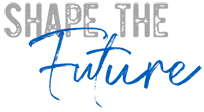Is your Resumé Current?
Your resumé has to provide only enough information to make contacts and intrigue interviewers to know more about you. The details and subtleties of your career should come out in an interview.
The average length of time someone takes to read a resumé is 4 seconds. If there is something that catches the reader they may spend one more minute to look over your credentials.
So…make it interesting. You need to find a way to hook the employer into spending that extra minute on your resume.
There are some points to remember in designing a resumé.
Gear the resumé for the job.
You may have three or four differently styled resumés depending on the type of job for which you are applying. It should be clear, concise and give the reader a strong sense of your skills and potential for doing a specific job.
Use action words in your job descriptions.
You want to give the employer the idea that you are a person who gets results. A person who will get the job done. Begin your job descriptions with words like managed, directed, designed.
Include anything that relates to that job.
Remember that skills are transferable, that is, if you know how to use a typewriter you can probably learn how to use a computer. Remember that the only person that knows exactly how to do the job for which you are applying is the person who has just left that job. You need to make the employer see you as successful and willing to learn new skills.
Concentrate on your strengths.
List your achievements. Blow your own horn!
Be accurate and honest.
Applying for a job with a false resumé will probably backfire. Employers check references and if you get hired based on false information, they have the right to let you go.
Be clear and concise.
Continue to pare down your resumé until it reads clearly to anyone. Be careful about repeating yourself. Employers sometimes read hundreds of resumés for one position.
Check for errors.
If you use a computer, use the spell-check function as well as have someone read your resumé to check for any spelling or grammatical mistakes and for an overall sense of clarity. Getting feedback from someone is the best way.
Components of a resumé
A resumé should contain the following information:
- Your current address, phone number, email and fax if you have one.
- Your formal education.
- Past work experiences, full time and part time, listed most recent first.
- Any volunteer experience, professional development, training or workshops, that relate to the job for which you are applying.
- Any other skills you have that relate to the new job such as typing speed, foreign languages, computer knowledge.
- There are many styles of resumés and you can vary the style according to the job. The resource list at the end of this chapter gives you some web sites and printed matter that can help you with design and presentation style.
Checklist
- Allow plenty of time for writing your resumé.
- Arrange your resumé so the reader sees the most important information first.
- Adapt your resumé to the job applied for, stressing the needs of the employer.
- Balance the appearance of your resumé - leave lots of white space.
- Use headings and sub-headings. Keep it simple, clear and concise.
- Give a positive impression of yourself.
- Be honest.
- Begin sentences with action verbs.
- Emphasize your accomplishments and achievements.
- Avoid “I” and “Duties included”—Use action words such as: organized, coordinated, managed.
- Be neat; no errors in spelling or punctuation.
- Print your resumé on white paper (off-white, eggshell or very pale grey is acceptable).
- Have a trusted friend read your resumé.
- Edit, Edit, Edit!
A well designed resumé will emphasize strengths, minimize screen-out factors, and use vital keywords to rank high in both human and computerized screening.
If you can answer “YES” to the following you are ready to write your resumé!
Resumé Checklist
- Do you know what type of work, assignment or job you are looking for?
- Have you researched the industry, branch or department you are interested in?
- Have you thought about your career objectives and can you express them?
- Can you identify and communicate your past accomplishments/successes?
- Have you gathered a chronological list of work descriptions and employers, with associated time frames?
- Have you identified your relevant education, training, certification and qualifications?
- Have you kept in touch with your references?


